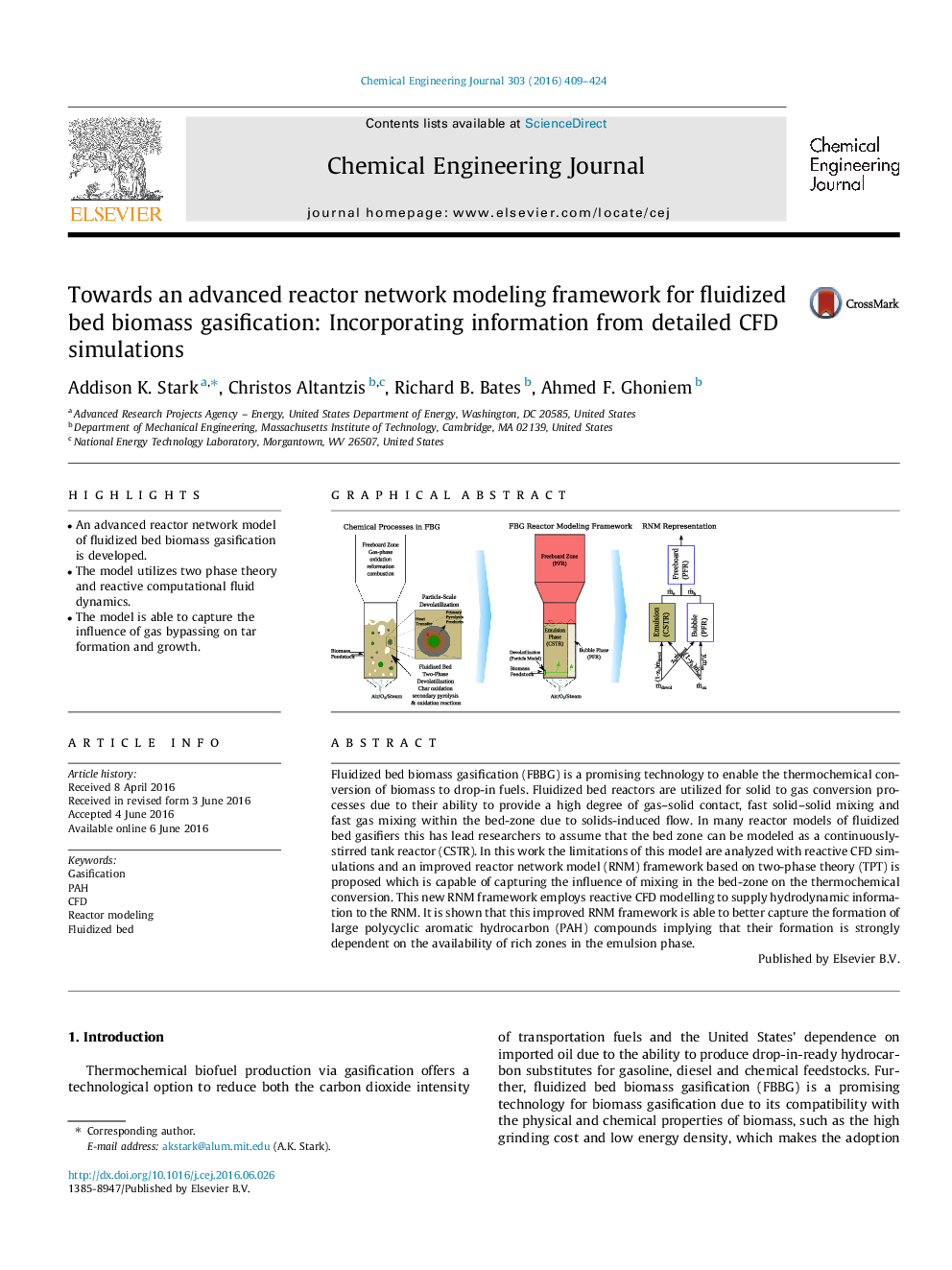| Article ID | Journal | Published Year | Pages | File Type |
|---|---|---|---|---|
| 145506 | Chemical Engineering Journal | 2016 | 16 Pages |
•An advanced reactor network model of fluidized bed biomass gasification is developed.•The model utilizes two phase theory and reactive computational fluid dynamics.•The model is able to capture the influence of gas bypassing on tar formation and growth.
Fluidized bed biomass gasification (FBBG) is a promising technology to enable the thermochemical conversion of biomass to drop-in fuels. Fluidized bed reactors are utilized for solid to gas conversion processes due to their ability to provide a high degree of gas–solid contact, fast solid–solid mixing and fast gas mixing within the bed-zone due to solids-induced flow. In many reactor models of fluidized bed gasifiers this has lead researchers to assume that the bed zone can be modeled as a continuously-stirred tank reactor (CSTR). In this work the limitations of this model are analyzed with reactive CFD simulations and an improved reactor network model (RNM) framework based on two-phase theory (TPT) is proposed which is capable of capturing the influence of mixing in the bed-zone on the thermochemical conversion. This new RNM framework employs reactive CFD modelling to supply hydrodynamic information to the RNM. It is shown that this improved RNM framework is able to better capture the formation of large polycyclic aromatic hydrocarbon (PAH) compounds implying that their formation is strongly dependent on the availability of rich zones in the emulsion phase.
Graphical abstractFigure optionsDownload full-size imageDownload as PowerPoint slide
